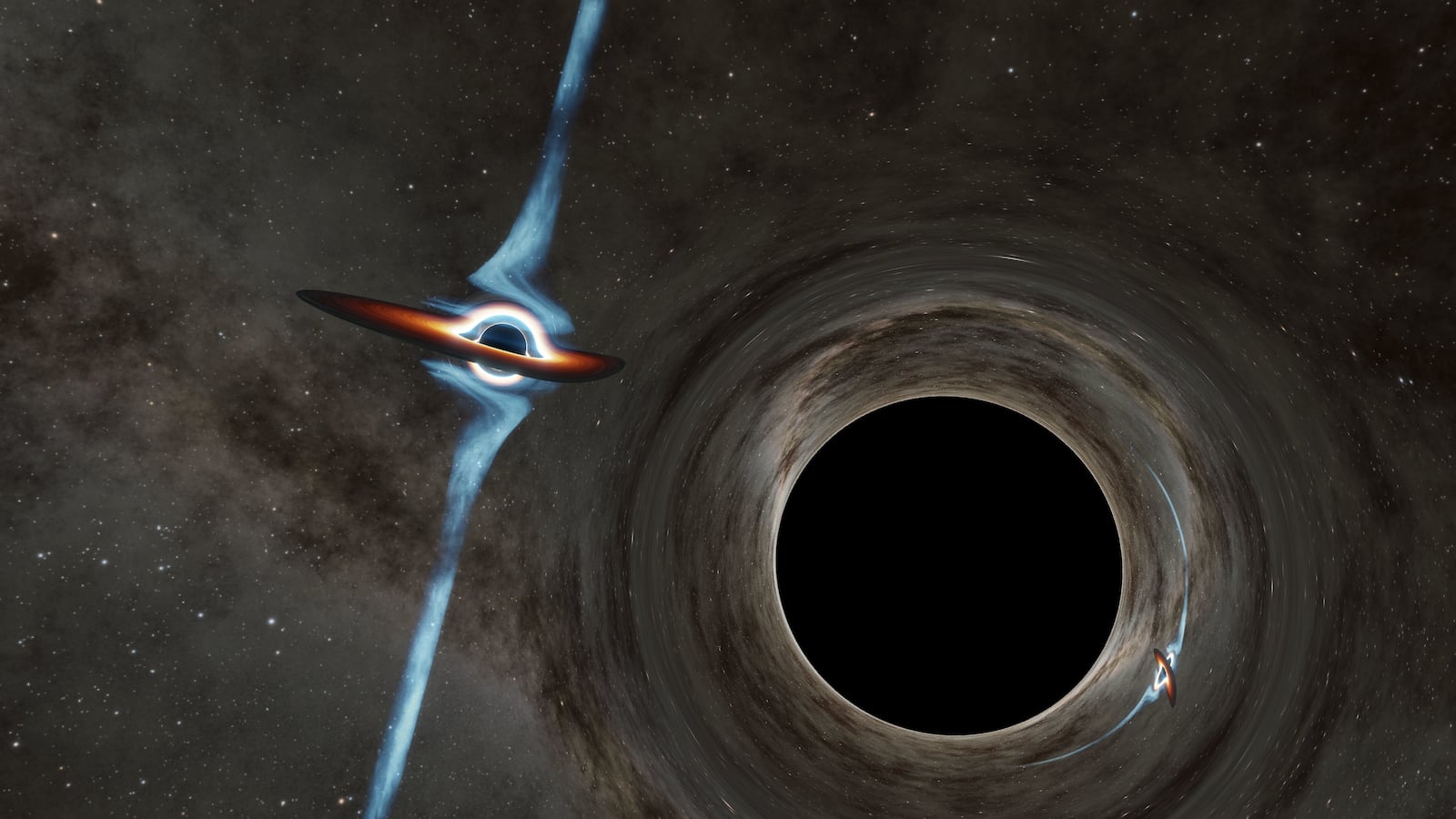Quasars are some of the most powerful objects in the cosmos. As radio astronomy boomed in the 1950s, these intensely shiny pinpricks of light were first thought to be stars billions of light-years away. Later, they were labeled “quasi-stellar radio sources,” or quasars for short.
Astronomers would eventually learn that quasars are the superheated cores of some galaxies, powered by supermassive black holes that are millions or billions of times more massive than the sun. Most quasars have just one supermassive black hole. It’s been thought possible that a quasar could be powered by multiple supermassive black holes, but we’ve never found good evidence of this.
Until now. In a study published in The Astrophysical Journal Letters on Wednesday, a group of astronomers discovered evidence for two supermassive black holes orbiting around each other every two years in a quasar named PKS 2131-021, 9 billion light-years away. The black holes are separated by a distance that’s 50 times longer than the expanse between the sun and Pluto.

And in 10,000 years, they’re going to smash into each other in one hell of a spectacle.
The researchers first came across this discovery back in 2020, when a powerful jet of light emanating from PKS 2131-021 appeared to be shifting back and forth like a ticking clock. This suggested the quasar was being jostled around by more than one supermassive black hole. Luckily, because astronomers have been keeping track of PKS 2131-021 for the last 45 years, the team was able to find the pattern popping up in data between 1976 and 1983, before it mysteriously disappeared for two decades. The researchers believe this was most likely due to changes in how black holes fuel themselves. The pattern then reemerged in 2005.
“The clock kept ticking,” Caltech astronomer and study co-author Tony Redhead said in a press release. “The stability of the period over this 20-year gap strongly suggests that this [quasar] harbors not one supermassive black hole, but two supermassive black holes orbiting each other.”
While this discovery doesn’t conclusively prove PKS 2131-021 contains a pair of supermassive black holes, these fluctuating patterns in the radio-light observations may help astronomers recognize and find more of them in other quasars. One potential candidate is OJ 287, which is estimated to be 5 billion light years away from Earth.
Just as the case with car crashes, it’s extremely rare to have a heads up of an impending collision between two black holes, making this discovery all the more tantalizing for astronomers. A collision between two massive bodies like this produces highly-energized gravitational waves, which are ripples in space-time generated that spread like ocean waves across the universe. Scientists relish the detection of gravitational waves, since they could one day help us learn how the entire fabric of the universe is held together, among other mysteries.
Still, PKS 2131-021’s twin supermassive black holes won’t crash into each other for another 10,000 years. If humanity is around by then, however, we’ll be able to document the full beginning, middle, and end of one of the strangest and most impressive astrophysical phenomena to ever occur.





